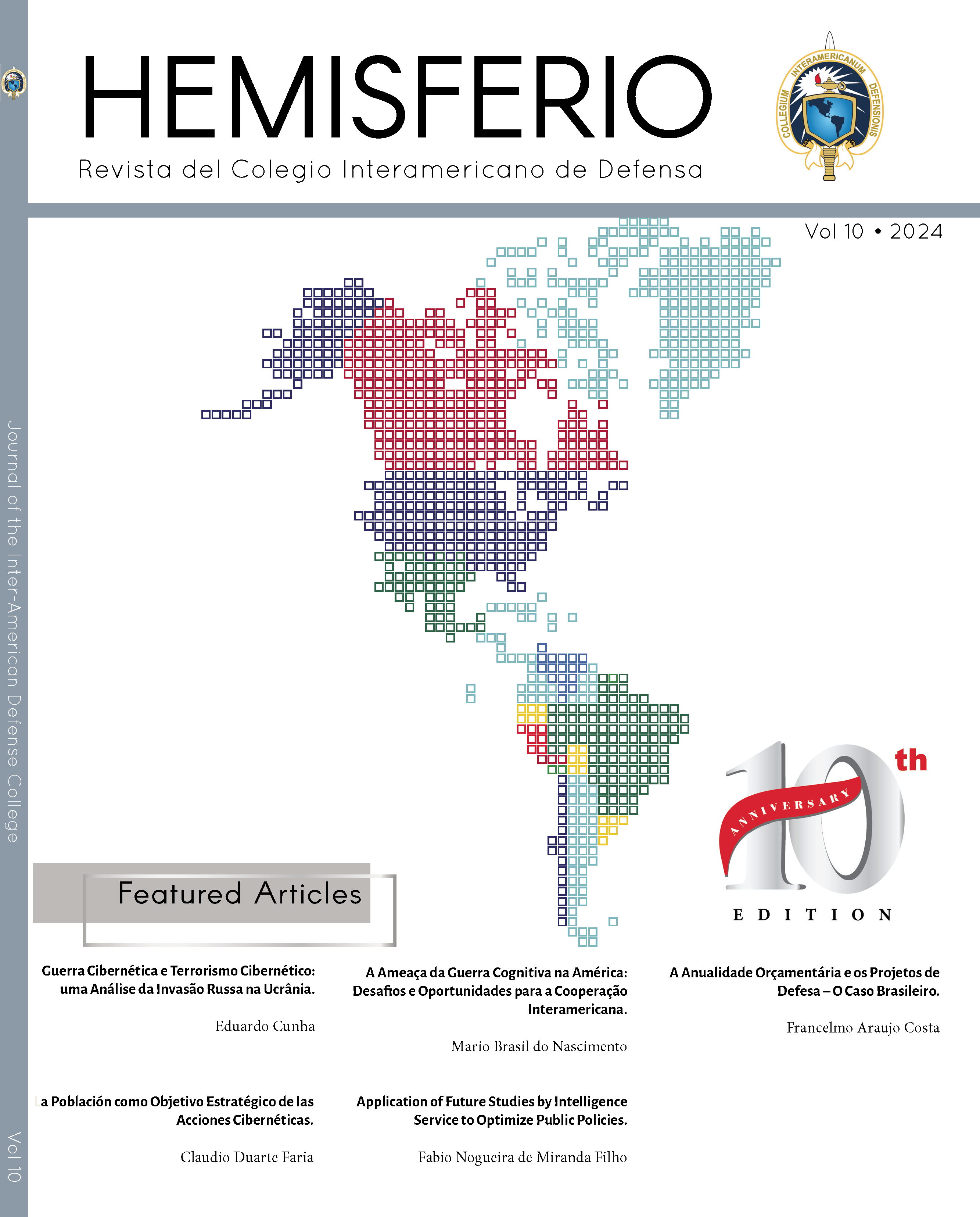Application of Future Studies by Intelligence Service to Optimize Public Policies
DOI:
https://doi.org/10.59848/24.1207.HV10n4Palabras clave:
Intelligence, Public Policy, Future Study, Defense, National Decision, Making ProcessResumen
Faced with a future full of uncertainty and a turbulent environment, countries are seeking to seize opportunities and solve problems in an increasingly timely manner. To this end, governments rely on public policies as a management instrument. To advise government decision-makers, the Intelligence Services provide products, including the Future Study, which explains likely future developments in public policies. Therefore, this article aims to analyze under what conditions the Future Study contributes to the HEMISFERIO. Vol 10, 2024 69 ISSN 2412-0715
planning, execution and evaluation of public policies by governments. In more detail, we seek to understand how the Future Study can be applied, considering reasons and criteria for its adoption or non-adoption. Through qualitative and exploratory research, the studies pointed to the following flexible model for using the Future Study, according to the six phases of the public policy cycle: Reception of Demands (not recommended), Agenda Setting (recommended), Formulation of Alternatives (not recommended), Selection of Options (recommended), Implementation (recommended through indicators) and Evaluation (not recommended).
Descargas
Publicado
Número
Sección
Licencia
Derechos de autor 2024 Hemisferio - Revista del Colegio Interamericano de Defensa

Esta obra está bajo una licencia internacional Creative Commons Atribución-NoComercial 4.0.


